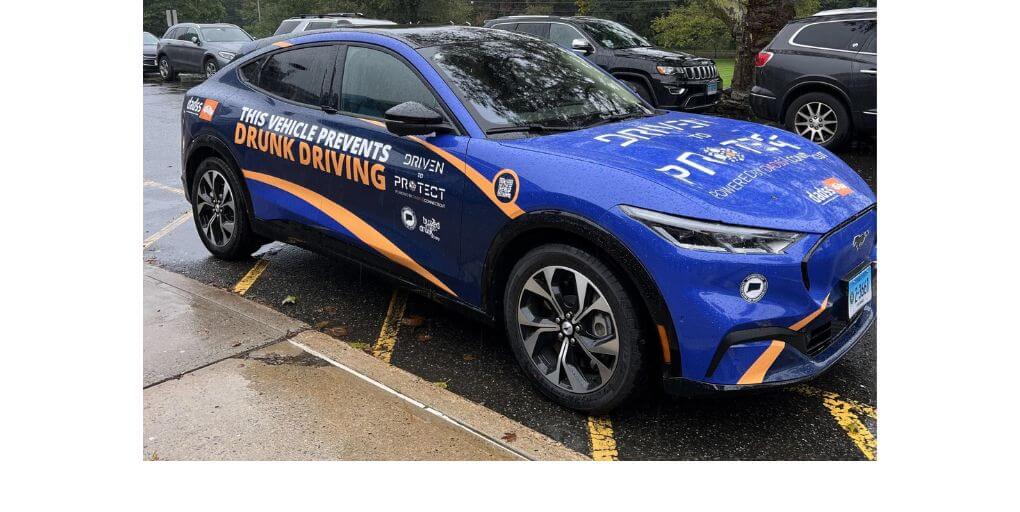The National Highway Traffic Safety Administration is taking the first step toward making impaired-driving prevention technology standard in future vehicles. It's by way of an Advance Notice of Proposed Rulemaking that it says will help lay the groundwork for potential alcohol-impairment detection technology standards in all new passenger vehicles when the technology is "mature". The NHTSA made the announcement last month as it kicked off its holiday season Drive Sober or Get Pulled Over campaign. Essentially, the notice allows safety regulators to start gathering information about the state of the technology and how to deploy it.
The agency says alcohol impairment is one of the leading causes of death on our nation’s roads. In 2021, the latest data available, 13,384 people were killed in drunk driving crashes.
The NHTSA press release goes on to read:
The negative economic and societal costs of impaired driving are enormous. NHTSA estimates that fatalities, injuries, and property damage from alcohol-impaired driving cost our society $280 billion in lost wages, lost quality of life, medical costs, and so much more. Impaired driving prevention technology is an action identified in the National Roadway Safety Strategy to significantly reduce fatalities and serious injuries on the nation’s roadways in support of our vision of zero traffic deaths through vehicle features that promote driver safety and align with the principles of a safe system approach.
“It is tragic that drunk driving crashes are one of the leading causes of roadway fatalities in this country and far too many lives are lost,” said Polly Trottenberg, the U.S Department of Transportation’s Deputy Secretary. “The Advance Notice of Proposed Rulemaking we are announcing today is the first step toward a new safety standard requiring alcohol-impaired-driving prevention technology in new passenger vehicles. I want to applaud the NHTSA team, elected officials and advocates who helped get us to today and will continue to help lay the groundwork on this issue.”
“Impaired driving crashes are 100% preventable – there’s simply no excuse or reason to drive impaired by alcohol or drugs. We urge everyone to be responsible this holiday season. If you’ve had anything to drink, use public transportation, arrange for a sober driver, or call a taxi or ride-hailing service and get home safely,” said Ann Carlson, NHTSA’s Acting Administrator.
This ANPRM will help gather information about the state of technology to detect impaired driving, about how to deploy technology safely and effectively, and will provide other information to further the agency’s work as the research and technology advances to the level to develop a standard to prevent driver impairment.
The Bipartisan Infrastructure Law directs NHTSA to issue a final rule establishing a Federal Motor Vehicle Safety Standard that requires new passenger vehicles to have “advanced drunk and impaired driving prevention technology.” The law says that NHTSA should issue a new regulation only if it meets the requirements of the National Traffic and Motor Vehicle Safety Act, which states that a proposed standard must be reasonable, practicable, and reduce traffic crashes and associated deaths, among other factors.
Crashes and fatalities from impaired driving are completely preventable, yet alcohol-impaired fatalities in the month of December hit a nearly 15-year high in 2021. The holiday season is an especially deadly time, with more than 1,000 people killed in drunk driving crashes in December 2021 alone.
- To read the NHTSA's Advance Notice of Proposed Rulemaking click here.
- To read the NHTSA's full press release click here.
Driver Alcohol Detection System for Safety (DADSS)
A public-private research program called the Driver Alcohol Detection System for Safety (DADSS) has been working on impaired-driving prevention technology. The partnership brings together the Automotive Coalition for Traffic Safety (ACTS), which represents the world’s leading automakers, and the National Highway Traffic Safety Administration (NHTSA). DADSS responded to last month's NTHSA announcement saying:
“Today’s notice from NHTSA is a positive development that is welcomed by the DADSS Program,” said Rob Strassburger, CEO of the Automotive Coalition for Traffic Safety. “We share the desire to commercialize technologies to prevent drunk driving as soon as possible, and remain laser focused on delivering sensors that maintain the highest levels of accuracy, precision and reliability while also protecting consumer privacy.”
“We look forward to reviewing the proposal closely and remain confident the DADSS technology will remain high among those considered for widespread commercial use.”
DADSS has developed two technologies – a breath system, and a touch system, that are designed to measure and precisely quantify blood alcohol concentration (BAC) in drivers and prevent a vehicle from moving.
DADSS says it's currently completing the necessary testing to ensure the technologies are fast, accurate, and reliable before being introduced to consumers. It most recently brought its Driven to Protect Initiative to Connecticut in partnership with the Connecticut Department of Transportation. The initiative gives states the opportunity to test the DADSS alcohol-detection technology on their roads.
DADSS cites 2024-2025 as the current timeline for a fully passive breath sensor to be made available to product integrators. The touch sensor’s timeline still hasn't been determined.

